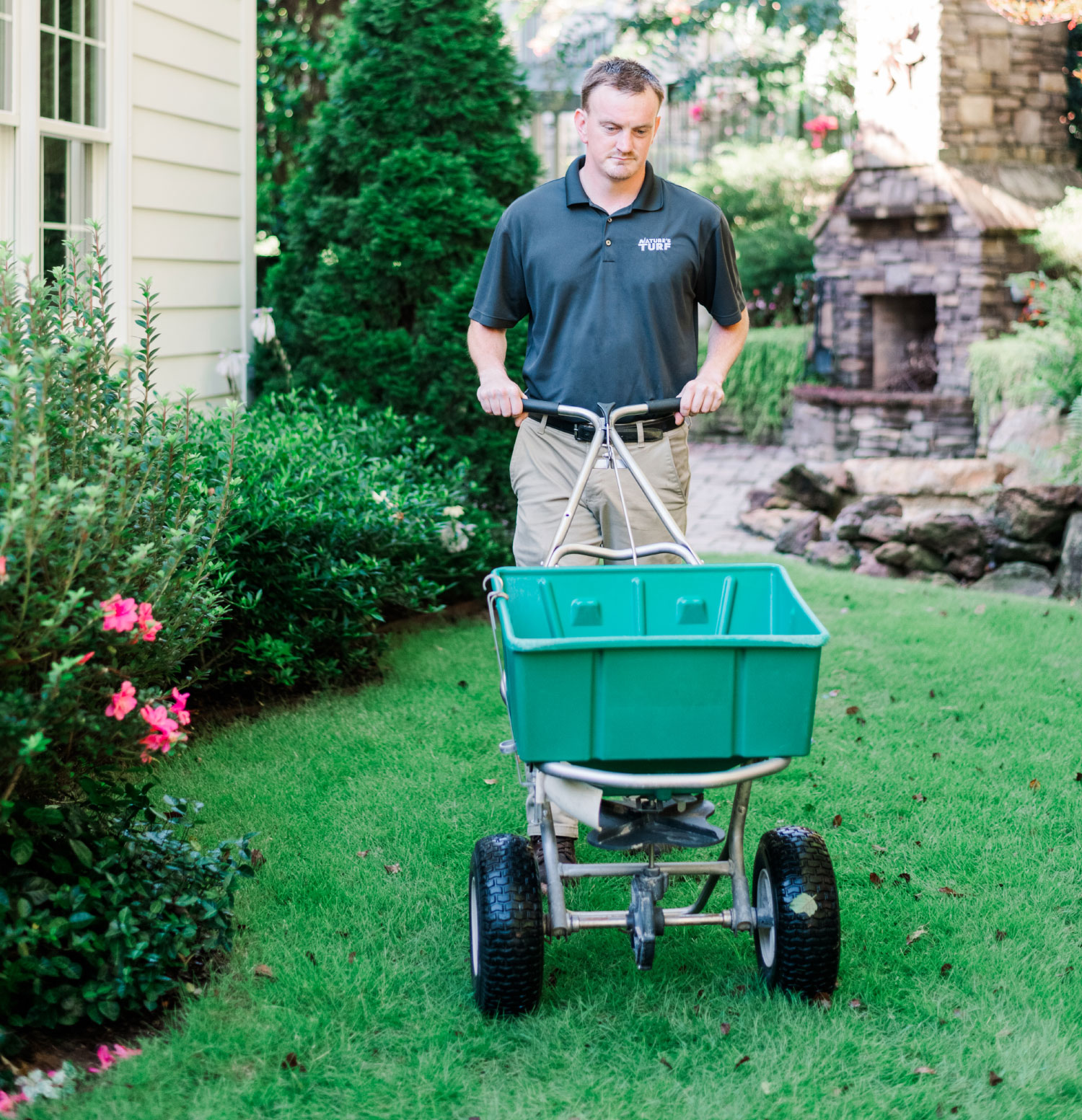The water cycle is one of those natural phenomena that is fascinating to learn about in school. The sun turns water into vapor that accumulates as a cloud until it gets so heavy it falls back to the earth as rain? It almost sounds like science fiction. What does rain mean for your yard treatments? It’s generally a good thing. Let’s talk about the various types of lawn care treatments, rain’s effects on those treatments, and how the professionals at Nature’s Turf apply those products to help you achieve a beautiful lawn.
Rain After Granular Pellet Treatments
Treating your lawn with granular pellets requires water for the product to disperse, and natural rainfall is a great way to make that happen. Granular treatments include limestone, root zone fertilizers, and summer fertilizer treatments. They also include some of our special programs such as Spring Booster and Fungicides. Irrigation and rainfall both help break down the little pellets and carry them to where they are useful.
Limestone dissolves and makes its way into the soil, where it helps to offset pH decreases created by normal lawn applications. This is important because it encourages pH to remain at a level where the needed nutrients for our grasses are most available.
Granular fertilizers are dependent on rainfall or irrigation for dissolution and also for plant availability and utility. Plants don’t absorb these nutrients as the pieces of fertilizer you can see. These nutrients have to be in a solution where they can be drawn into the roots. Rainfall is also important for the microbes that make some of our fertilizer sources plant-usable.
Fungicides must also be dissolved in water so they can reach the parts of the plant where they can be functional. For plant diseases at the crown (the point where roots and shoots converge), they have to be in solution at crown level to be functional. For foliar infections, being in a solution allows them to be translocated (moved) through the entire plant.
Rain After Liquid Treatments
Liquid treatments dry on the surface of your lawn after application and depend on rainfall or irrigation to become functional. Whether fertilizers or weed control, rain after treatment can be helpful in getting those products to where they can be used by the plant.
Liquid fertilizers can be viewed in many of the same ways as granular fertilizers. While some of it is available for foliar absorption and utilization, watering them into the soil simply allows that nutrition to be plant-available in solution at the root system.
A large concern for many of our customers is weed control, since that is generally why they’ve employed us to begin with. Pre-emergent weed control is a fundamental component of that equation, and rain soon after a pre-emergent application creates concern for many of our customers. It’s important to know that the rainfall is simply taking those pre-emergents into the soil, creating the desired weed control barrier. Rain after a pre-emergent application is a good thing!
Is Rain After an Application Ever a Bad Thing?
Short answer? No. Longer answer? It can be a little more complicated, but generally, no. The only applications that may suffer from rain occurring too soon after an application are post-emergent weed control, and that’s only if they haven’t had the opportunity to be absorbed.
We carefully select our post-emergent weed-control products based on the weeds present, and we often combine them with products that spread them out across the surface area of weed leaves, making them rain-safe more quickly. A majority of what will be absorbed by the weeds is absorbed within an hour of application.
So, What Should We Do If It Rains Right After a Treatment?
First, we ask for a little patience. Post-emergents usually take a number of days to express symptoms. We often use the timeframe of 10-14 days to see symptoms. This is important so we can see which weeds have expressed symptoms and which ones have not. This minimizes the potential for over-application and maximizes our efficiency in caring for your lawn. We offer free service calls to customers who have been with us for more than 3 treatments—that applies to weather concerns as well!
Important Takeaways:
Treating your lawn with granular pellets requires water for the product to disperse, and natural rainfall is a great way to make that happen.
Liquid treatments dry on the surface of your lawn after application and depend on rainfall or irrigation to become functional.
Post-emergent weed control products may be compromised by rain, but those products are generally absorbed or rainfast in an hour.
Reach out to us at Nature’s Turf via email or by phone at 678-831-6343 with questions about lawn care treatments and to help you achieve a healthy, beautiful lawn.








